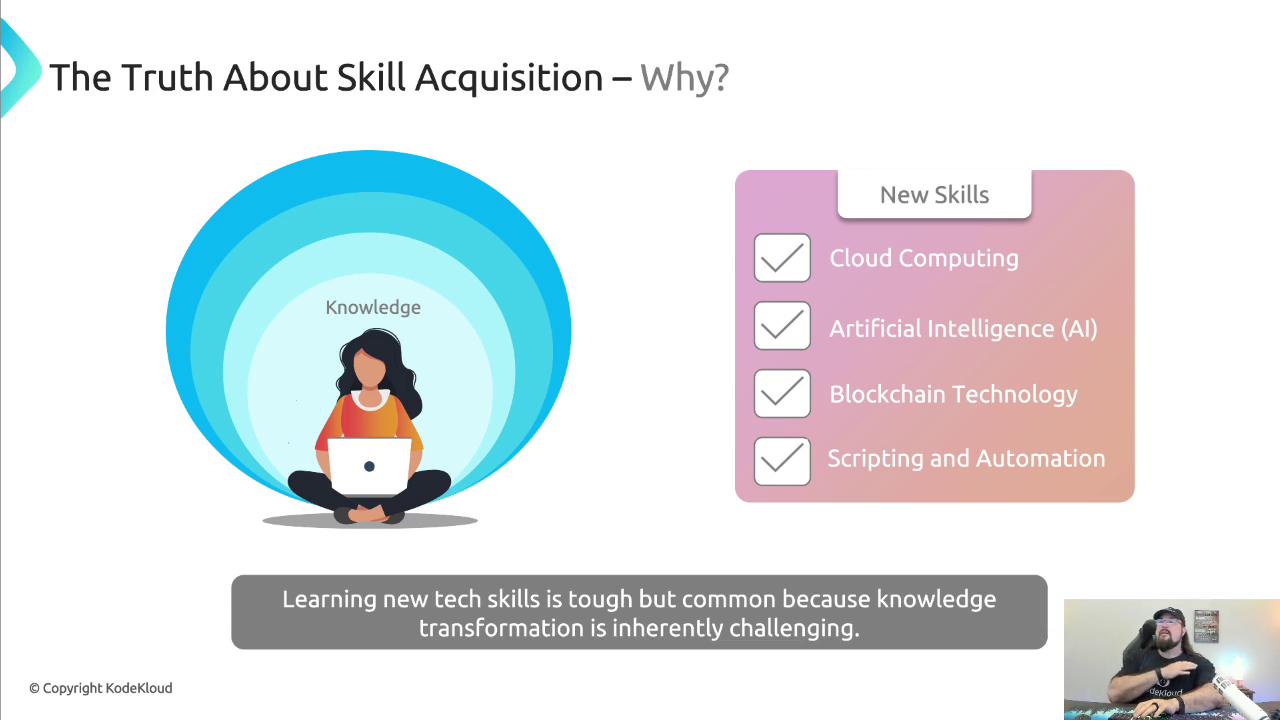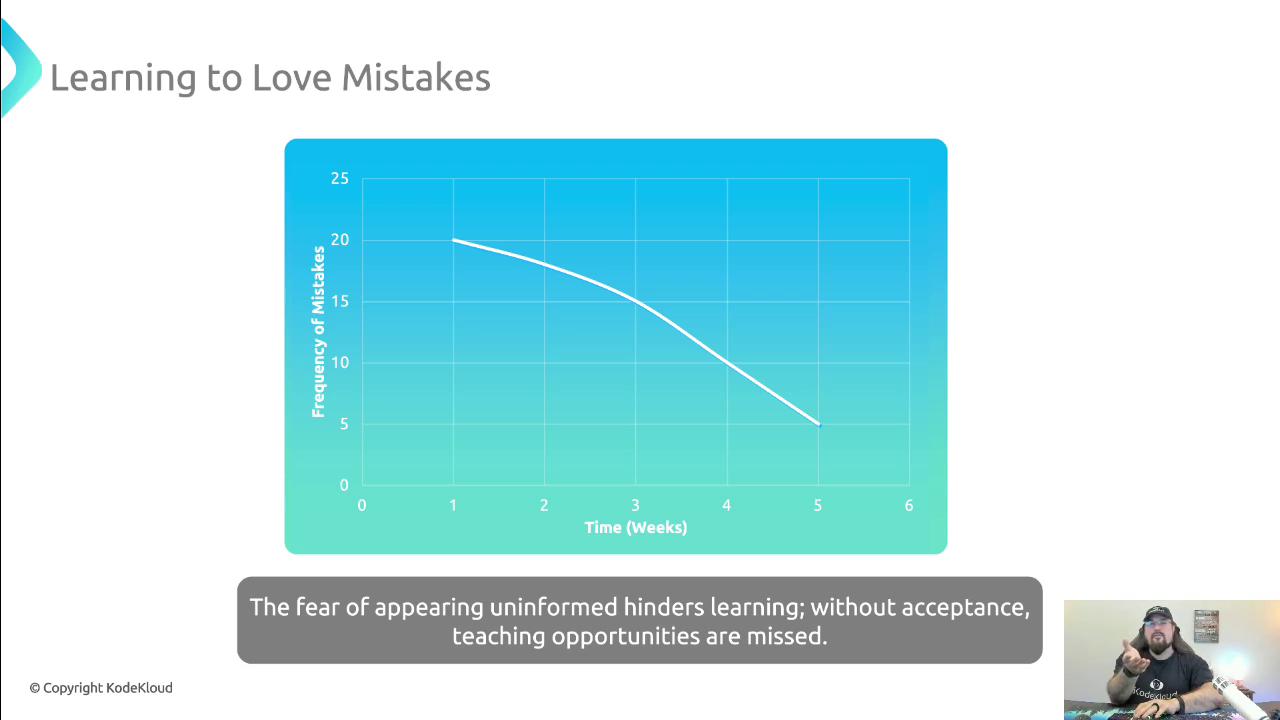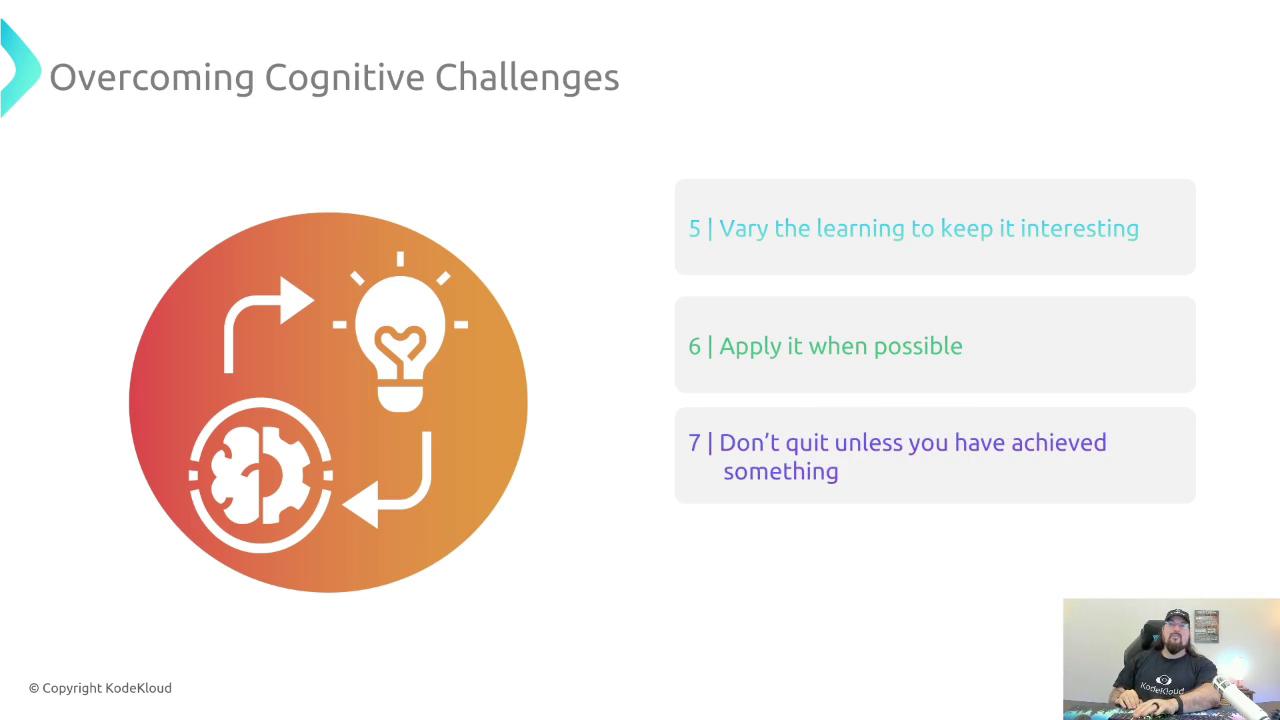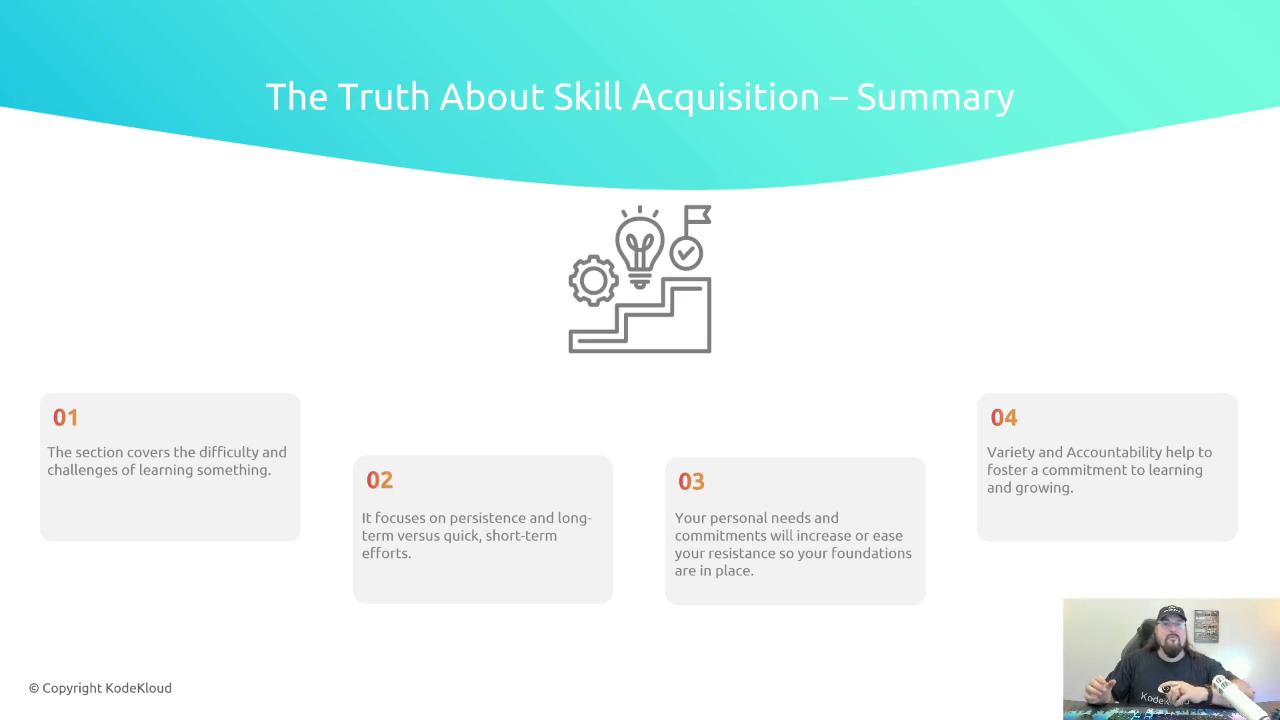Enhancing Soft Skills for DevOps Engineers: Essential Non-Technical Skills to Thrive
Growing Learning and Adapting to Change
The Truth about Skill Acquisition
Welcome, aspiring professionals! I’m Michael Forrester, and in this lesson we’ll uncover the realities of skill acquisition and how you can accelerate your journey from novice to expert.
Why Skill Acquisition Matters
Every major technology wave—from internet virtualization and cloud computing to containers, microservices, and AI—demands new capabilities. Even established fields like platform engineering are constantly evolving. While you don’t need to master everything, diversifying your toolkit ensures you stay adaptable and valuable in any environment.

The Components of Skill Acquisition
True expertise emerges at the intersection of three core ingredients:
| Component | Why It Matters |
|---|---|
| Time | Mastery unfolds over consistent, sustained effort. |
| Effort | Deliberate practice and focused repetition drive faster progress. |
| Embracing Failure | Early mistakes reveal blind spots and guide your next successful move. |
Note
Think of learning to code like a toddler learning to walk: every fall is an opportunity to adjust your balance. Embrace each tumble as critical feedback.
Understanding the Learning Curve
Skill growth isn’t linear. You’ll hit:
- A surge of initial success
- A plateau where understanding feels minimal
- A breakthrough into deeper mastery
Practical application—writing scripts, deploying infrastructure, or building microservices—is where you begin to deliver tangible value.

Learning to Love Mistakes
Progress often feels like two steps forward, one step back. Over time, the frequency of errors declines and your confidence soars. To benefit fully:
- Let go of the fear of looking uninformed
- Celebrate small wins and iterate quickly
- Reflect on each misstep and adjust your approach
Warning
Avoid perfectionism. Waiting until everything is “just right” stalls learning. Ship early, learn faster.

Overcoming Cognitive Challenges
Effective learning goes beyond repetition. These strategies will keep your brain primed for growth:
- Vary Your Learning: Alternate videos, books, webinars, and interactive tutorials.
- Apply Knowledge Quickly: Practice in sandbox or lab environments before production.
- Set SMART Goals: Specific, Measurable, Achievable, Relevant, Time-boxed targets.
- Build a Supportive Environment: Eliminate distractions, track your mood, and partner with an accountability buddy.
Persistence is critical: struggle, progress, repeat—until you reach your objectives.

Exploring Learning Styles
While strict “visual vs. auditory vs. kinesthetic” categories are outdated, engaging multiple senses boosts retention:
- Combine Mediums: Pair hands-on labs with readings and live demonstrations.
- Teach to Learn: Explaining topics to peers cements your understanding.
- Alternate Abstract & Concrete: Move between theory (e.g., architecture diagrams) and real-world practice (e.g., coding exercises).
A playful twist—like choreographing Kubernetes concepts—creates strong, lasting memories.
Summary and Next Steps
Skill acquisition demands time, effort, and a willingness to fail. Your unique goals and preferences will shape the path, but variety, accountability, and reflection keep you on track:
- Schedule regular practice sessions.
- Track milestones and celebrate progress.
- Engage with peers or mentors—online or in person.

Ready to continue the conversation? Join our community on KodeKloud or discuss with peers in your favorite forum. Keep learning, keep growing!
Links and References
Watch Video
Watch video content